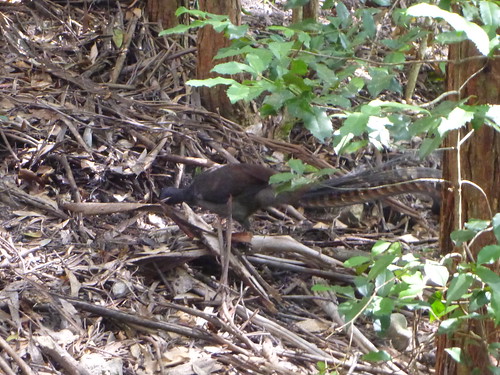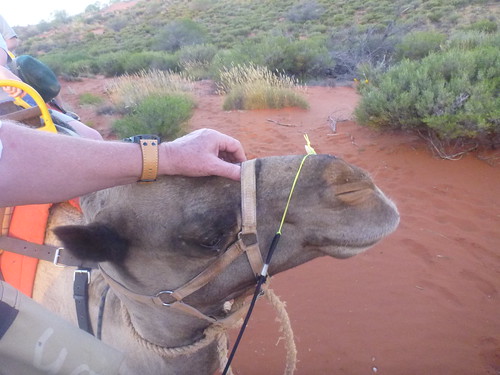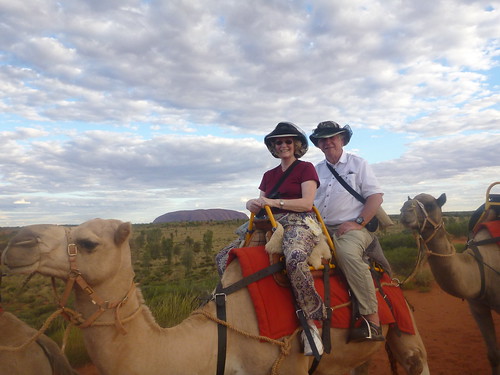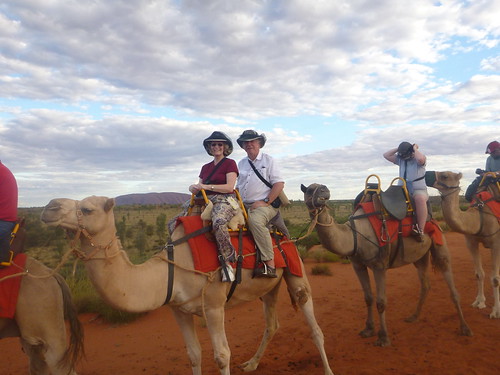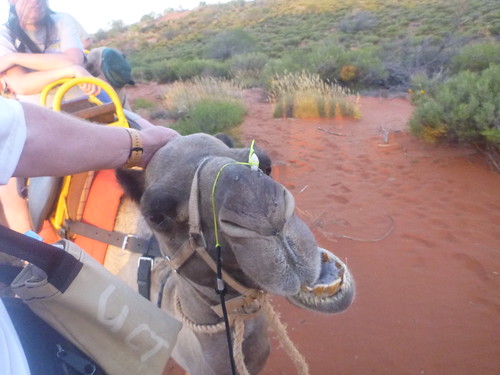For millenia, Australia was untouched by most of the world, only the native flora, fauna and people existed in perfect harmony. Literally, in thousands of years little had changed on this continent. And everything in Australia is a little different. All the native animals are uniquely Australian. There are no bears as in the rest of the world; no lions, no tigers or cougars. There are plants that can only be found in Australia and vice versa too. There are no kangaroos anyplace else on this earth; no koalas, no wombats and none of the myriad of other creatures. Australia developed separately from all other continents. Australia is unique!
The native people, the aborigines, have occupied and taken care of the land for close to 70,000 years. Only in the last 200 years, has the rest of the world started to move into the land down under. Yes, similar events happened in the Americas, but let's stick with Australia. How or what were my impressions of this sovereign and independent nation? What did I see or how did I feel while spending 3 weeks traipsing from one town to the other? I gave myself some time for reflection to think about that and I am going to write some of my ideas down in this blog even if I prove myself totally wrong in years to come. On the other hand I might only state the obvious.
Australia today is a first class nation; run very efficiently and proud of their differences from other countries. Australia was Influenced in a major way during the British Empire period into "thinking" British. Like driving on the left side of the road, like ruling their land using the British Parlimentory setup, like basing their laws on the British commonwealth rules, like speaking English, etc. Yet, Australia is not British. For sure they have their own say and do their own thing when governing themselves. Australians are regarded highly by their neighbors, mostly the small or large Pacific Island nations. In fact the whole earth thinks of Australia in a benevolent way. Not because Australians are friendly, they are that, but because Australians rule themselves and do so well that people from equally developed continents or countries, like Canada or Europe still immigrate there today. Australia is still a magnet to many people. People can earn a good living in Australia, especially if one has a skill that others do not have or few people have. The minimum wage is $18.50/hour, more than double what you can earn in the U.S. ($7.25) and that is a huge draw for lots of people from all over the world. Australia today is a bit picky about whom they want as a citizen or even whom they let in as a worker. I can not blame them, they have worked hard to have a good life. Before they share this life with others they want to be able to sort out who it will be that benefits from what they now have. That is only natural.
On the other hand, the aboriginal people occupying the land did not have the same choices. The British moved in by force and just took what they considered free land. They established penal colonies to relieve the overcrowded British prisons. The prisoners, having served their sentences, generally remained in Australia and worked as laborers, miners or farmers. Their rough and ready ways still permeate Australian behavior today. Their European thinking, in a very short time, flooded the whole of Australia. So did their diseases. Nobody is proud of this part of Australian history. Land grabbing by foreigners happened on other continents on this globe. That it happened before or that this is just the way it is, eases some people's minds, but does not make the whole of it right. The natives, in their own way, lived a good life, too. Nobody can go back to a previous time and undo things, so let's stick with looking at Australia the way it is today.
I missed the internet in Australia. Oh, sure they have it. But I was not going to pay $7 for one hour of access that one motel wanted to charge. Even in a McDonald's, they charged for access to the web. Yes they have the internet. Free WiFi is rare, and when I did find it it was slooooow and often did not connect. Some hotels used satellite dished for their connections which were useless on clouded days. I feel that wifi could be hugely improved upon in Oz.
Gasoline is available everywhere but it is essential not to run one's tank too low in the outback. The stations are very spread out and there are hardly any stations between towns. Towns are about 80 miles apart.
All the roads were in ok shape, yet the roads are much narrower than the roads I am used to in North America. Most roads are just 2 lane roads. Each side or lane is as wide as a semi trailer truck. I felt really badly for the truckers, there is no wiggle room. Your truck fits onto the asphalt, yes, but just barely with no room on either side of your wheels. Driving like that at 110km/hour (68mph) is not fun. I also found that cresting a hill was an adventure, the climb was so steep I could, many times, not see past the crests.
I liked the speed limit controls. 60km/hour means just that, it does not mean 61 is ok. Get caught and it will cost you dearly. Speed cameras are everywhere. Just do not speed in Australia and do not run a red light. Most traffic lights have cameras build in. The light is yellow and you think you can make it? Flash, you got a ticket. Expensive! All GPS's have the speed limit built in. If you want to know the speed limit look at your GPS, it will show you. It will even give you a soft ding tone if you set it up that way, should you travel over the limit. The electronics across all of Australia to control traffic flow are all in place and they work. If your GPS tells you you will arrive in 27 minutes, you can trust it, barring an accident someplace. The roads are so controlled, that you can trust yor GPS to give you the right ETA. It simply works!
Since the wages are so high the cost of living is high, too. Be aware that Australia for outsiders is an expensive place to visit. A simple dinner of fish and chips with one beer will cost you between $20 to 25 depending on where you are. I liked the no tipping policy. All help in the restaurants make at least minimum wage, so no tipping. Same for taxis and other services. No tipping! Yea!
Australia is clean, well cleaner than lots of other places I have visited. Brisbane was spotless. They can compare themselves to Singapore, I am sure. Melbourne had the most grafitti but it was an art form there. Sydney near the airport (we walked from the car return back to the hotel) needs a cleaning crew badly. The smaller towns like Aberdeen were ok, they work great as a supply station for gas. There is not much else to write about them. We did see a pub in every town, though. I don't think there is a town anyplace in Australia that has no pub. Beer is their favorite drink and they drink a lot.
I said it before, Australians are friendly, even jovial. Cuing up is in their nature, no shoving or pushing. When I was pushed, it was invariably an Asian person, not even an Asian Ozzie. Other visitors from China or Korea or other Asian countries are stand outs when it comes to being loud and noisy and pushy. Japan excepted.
Modern Australia is a mix of people, all trying to fit into this self made, different from the rest of the world, country.
The people who really do stand out to me are the original inhabitants. Their demeanor is foreign to me. I can not read their facial features; they live (still?) in a different world. But then, I did not see too many of them. They seem to hide in the shadows. They still talk about their dream times, they still live a different life it seems. I don't know anything about Australia I guess, since I could not talk to them at all. The many men and women of the original tribes are so different. It is like seeing a deer stand next to a kangaroo, both eat grass, while developmentally they are native to their own areas yet they are so different in many other aspects. Millenia of development can not be eliminated in just 200 years. Cooperation between the cultures, as is starting with land management in the Uluru area, might lead to an even better place to Iive than Australia is today.
Viva la difference!
